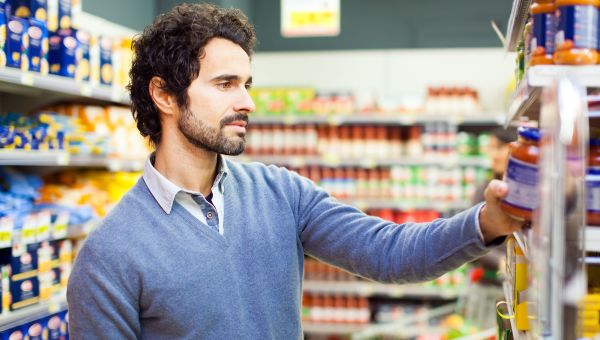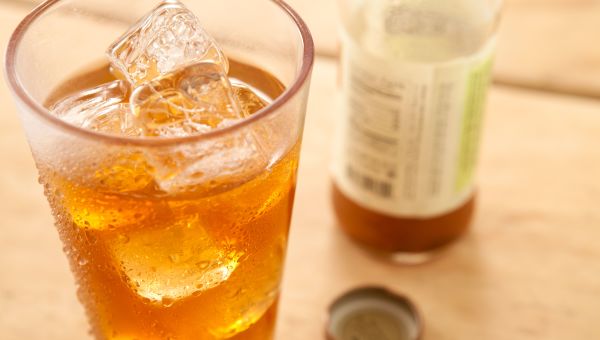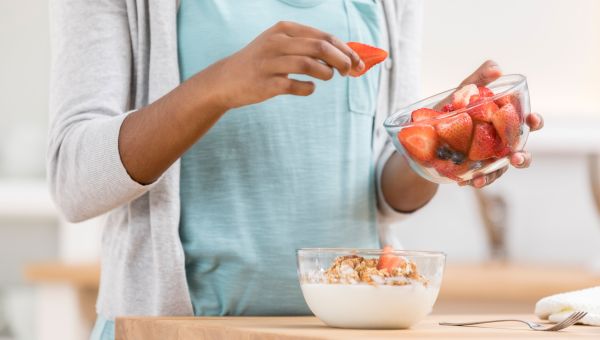9 surprising foods that can raise your blood sugar levels
Understanding nutrition labels and the glycemic index can help you select foods that help you manage your blood sugar levels.
Updated on September 5, 2024

When you’re managing your blood sugar levels, it can take a lot of research to make sure you’re eating foods that are low in added sugars and refined carbohydrates. Even seemingly “healthy” and wholesome foods can cause your blood sugar levels to rise.
We spoke with Sarah Varghese, MD, about common foods that may be secretly spiking your blood sugar. Dr. Varghese is an endocrinology, diabetes, and metabolism specialist at Our Lady of Lourdes Hospital in Camden, New Jersey.
Here are nine foods everyone should know about, plus tips on how to detect surprising sources of sugar on your own.

How much sugar can you have
The average, healthy adult should get less than 10 percent of their total calories from added sugars. Unlike natural sugars, such as those found in fruit and milk, added sugars are put into food during the cooking or manufacturing process.
Most people don’t need to limit natural sugar, but they should stick to the recommended daily limit of added sugar. Exactly how much to limit depends on your diet’s total calories. If you eat 2,500 calories per day, no more than 250 should be from added sugars. If you eat 2,000 calories, no more than 200 should be from added sugars.
“The number one thing I tell people is to always read nutrition labels for each and every product they purchase,” says Dr. Varghese. “Simply reading and being aware of the contents will make a difference in the amount of sugar you consume.”
Tracking your food and beverage intake can also help make you aware of just how much of the sweet stuff you're consuming. Jotting your daily consumption on a piece of paper works, but phone applications can be helpful, too. Apps, like Sharecare (available for iOS and Android) make tracking easy. Just open the application and plug in the size and quality of your meal. You can even take photos of each food you eat to help you keep track

It’s not just about the sugar count
A high-sugar food might not cause a sharp blood sugar increase if it contains other nutrients like fiber, which slows the digestion of sugar. Often, the carbohydrate count of a food can give you a better idea of how a food will actually affect your blood sugar, since it includes fiber, sugars, and starches.
The glycemic index (GI) can also help you determine how a food you eat will raise your blood sugar levels. The GI compares each food to a reference food, pure glucose. It takes into account other nutrients like fat and fiber to help calculate how quickly your body will digest and absorb the carbs.
Table sugar has a GI of about 60. Glucose has a GI of 100. (Glucose is the type of sugar the body uses for energy. It’s also found in certain foods.)
High glycemic foods, or ones that raise your blood sugar quickly, are assigned a number between 70 to 100. Foods that cause a gradual rise in blood sugar score lower. Low GI foods are ranked 55 or less.
Here are nine everyday foods that can elevate your blood sugar levels.

Enjoy bananas (within reason)
Depending on your age and sex, adults should eat between one and a half to two and a half cups of fruit daily, even people with diabetes. But it’s important to remember that certain fruits are especially high in natural sugar and carbs. Keep track of fruit servings and, if you’re on a carb-restricted diet to control diabetes, count them towards your daily allowance.
“But I wouldn’t encourage all people with diabetes to eat high-sugar fruits like bananas,” says Varghese. If your blood sugar is poorly controlled, for example, consider low-sugar fruit options instead.
One medium ripe banana has 15 grams of natural sugar and 28 grams of carbohydrates. How will that impact your blood sugar? The average ripe banana has a GI of 51. GI scores below 55 usually are considered low. However, it also has a glycemic load (GL) of 13. GL measures how much a food will raise your blood sugar (again, GI measures how fast). A GL under 10 is considered low; anything over 20 is high.
Though they may be relatively high in natural sugar, bananas do contain essential nutrients like potassium and vitamin C. To enjoy the flavor and nutritional benefits of bananas, consider serving them alongside fiber-rich foods like oatmeal to help slow the digestion of their sugars.

Rice cakes
Plain rice cakes are considered a classic diet food. According to the nutrition facts label, rice cakes have little fat and calories and almost no cholesterol or sugar.
But that’s not the whole story. They also lack protein and fiber, which help you feel full and help keep blood sugar levels steady. As a result, rice cakes tend to rank high for GI and GL. They have:
- A glycemic index of 82 (remember, table sugar is about 60 and glucose is 100)
- A glycemic load of 69.7 (2 teaspoons of table sugar is about 6)
These numbers help explain why you might feel hungry after you eat them. They can elevate your blood sugar, but when that level drops again, you may end up feeling hungry.

Processed Or Flavored Oatmeal
“Oatmeal in itself is a healthy, low-glycemic product,” says Varghese. “But the flavored oatmeal you get at the store has loads of added sugar to make it sell. My recommendation is to avoid pre-packaged and instant oatmeal and, if you’re making your own, don’t use sugar, honey, or syrup.”
Instead, add flavor by sprinkling in:
- Low-calorie seasonings like cinnamon, nutmeg, or chai spices
- Blueberries, which only contain about 7 grams of sugar per half-cup and are a brain-boosting food
- Heart-healthy walnuts
- Chia or flax seeds
- Vanilla or almond extract
- Low-fat milk
Using real rolled oats doesn’t have to mean laborious cooking times. Try making overnight oats or cook steel-cut oats in large batches in a rice cooker or slow cooker while doing other things. (1 cup of raw rolled oats has a low to medium GL and GI; less than 1 grams of sugar; 55 grams of carbs.)

Pasta Sauce
“Ready-made pasta sauce from the grocery store is often high in added sugars,” says Varghese. “And if you’re eating it alongside pasta, which in itself has a high glycemic index, it can end up spiking your blood sugar significantly.”
But you can make delicious pasta at home, she continues. Start with a simple base of garlic simmered in olive oil, pour in a can of unsweetened tomatoes or tomato paste, and then add your favorite seasonings like basil or oregano. But be watchful about which products you’re using for your ingredients, as well as what you decide to pour your sauce over in the end, she cautions.
Check the nutrition facts labels on any canned or bottled ingredients to make sure they’re low in sugar and carbs. Opt for whole grain pasta instead of the traditional white kind for a lower glycemic index.

Baked potato
Baked potatoes have a glycemic index of between 81-95. They spike blood sugar more with a glycemic load of 20 (1 grams of sugar; 21 grams of carbs).
If you need a potato fix, yams are a sugar-steady option with a GI of 51 and a GL of 10. (Just avoid “candied” yams, which may have added sugar, syrup, and marshmallow toppings.) Grains like barley, quinoa, and brown rice have even lower GIs and can make for filling, satisfying side dishes.

Specialty coffee drinks
You might guess that super-sweet coffee house specials with mocha and other flavorings might contain a lot of sugar.
But exactly how much sugar comes in bottled coffee and tea beverages at the grocery store? Here’s how some popular products compare:
- Starbucks Doubleshot Espresso and Cream: 17 grams of sugar, 18 grams of carbohydrates
- Snapple Peach Tea: 40 grams of sugar, 40 grams of carbohydrates
- Dunkin’ French Vanilla Iced Coffee: 37 grams sugar, 38 grams of carbohydrates
Check the nutrition label even if you think you’re buying a “plain” coffee or tea drink. The front label might not indicate the beverage is sweetened, but brands may still add sugar or flavor enhancers.

Flavored yogurts
Yogurt may seem healthy because it’s marketed as a safe snack, even for people with diabetes, says Varghese. But that’s not always the case.
Again, always read the nutrition labels on products, including yogurts and other foods marketed as healthy, she says. One cup of plain, whole milk contains about 11 grams of naturally occurring sugars, while a little less than one cup of plain, nonfat Greek yogurt has 5 grams of naturally occurring sugars.
“If you add honey, chocolate, fruit-on-the-bottom, or any other toppings, you’re increasing the sugar content even more, she says”
Sweet, flavored yogurts may contain up to 26 grams of carbohydrates, depending on the brand.
“I recommend choosing a low-fat yogurt and topping it with fresh fruit or low-fat granola, instead,” Varghese recommends.

White baguette
A baguette is a long, crusty, French-style loaf of bread. Fresh-baked baguette with butter and jelly may taste delicious. Just be mindful that a plain white baguette has a high glycemic index of 70-80, which is higher than table sugar at 63.
For a sugar-steady alternative, opt for smashed avocado or a poached egg on sourdough wheat toast. A typical slice of sourdough bread has a low to medium glycemic index of 49-59, a GL of 8, and about 15 grams of carbs. The healthy fats in avocado or the protein from the egg will slow its digestion as well, keeping you full much longer than a baguette.

Condiments like ketchup
Everyday condiments like ketchup or barbeque sauce may not seem overly sweet, but they can have surprisingly large amounts of added sugar, says Varghese.
Dijon mustard has a GI of 35, while yellow mustard (with sugar) has a GI of 55, same as ketchup. “If you have diabetes, be aware of this and check the labels on condiment bottles. You can have ketchup and barbeque sauce, but enjoy them in moderation,” she recommends. “Know how much sugar is in your ketchup serving, how much is in your meal overall, and portion your foods accordingly.”

Centers for Disease Control and Prevention. Get the Facts: Added Sugars. Page accessed September 5, 2024.
National Institute of Diabetes and Digestive and Kidney Diseases. Healthy Living with Diabetes. Page last reviewed October 2023.
American Diabetes Association. Understanding Carbs. Page accessed September 5, 2024.
U.S. National Library of Medicine MedlinePlus. Glycemic index and diabetes. Page last reviewed November 3, 2022.
Vlachos D, Malisova S, Lindberg FA, et al. Glycemic Index (GI) or Glycemic Load (GL) and Dietary Interventions for Optimizing Postprandial Hyperglycemia in Patients with T2 Diabetes: A Review. Nutrients. 2020 May 27;12(6):1561.
University of Sydney Glycemic Index Research and GI News. GI Search. Page accessed September 5, 2024.
USDA MyPlate. Fruits. Page accessed September 5, 2024.
Castro, Regina. “Diabetes diet: Should I avoid sweet fruits?” Mayo Clinic. Page last updated August 31, 2022.
Barclay, Alan. How to enjoy a moderate glycemic load diet. The University of Sydney: Glycemic Index Research and GI News. November 2021.
Harvard T.H. Chan School of Public Health—The Nutrition Source: Bananas. Page accessed September 5, 2024.
Diabetes.co.uk. Glycemic Load. Page last updated October 29, 2023.
USDA FoodData Central. Rice Cake. April 1, 2019.
Glycemic Index Guide. Rice cake. Page accessed September 5, 2024.
Veterans Affairs Office of Patient Centered Care and Cultural Transformation. Understanding Sweeteners. Page accessed September 5, 2024.
Oregon State University. Glycemic Index and Glycemic Load. Page accessed September 5, 2024.
Harvard T.H. Chan School of Public Health—The Nutrition Source: Oats. Page accessed September 5, 2024.
USDA FoodData Central. Oats, raw. October 30, 2020.
American Diabetes Association. Types of Carbohydrates. Page accessed September 5, 2024.
USDA FoodData Central. Yogurt, Greek, strawberry, nonfat. April 1, 2019.
Lewis, Joanne. Grocery store tips for healthy shopping for breads. Diabetes Care Community. October 5, 2023.
Atkinson FS, Brand-Miller JC, Foster-Powell K, et al. International tables of glycemic index and glycemic load values 2021: a systematic review. Am J Clin Nutr. 2021 Nov 8;114(5):1625-1632.
NutritionValue.org. Sourdough bread. Page accessed September 5, 2024.
Glycemic Index Guide. Glycemic Index of Spices Complete Chart. Page accessed September 5, 2024.
More On


video

article

slideshow


video


video
